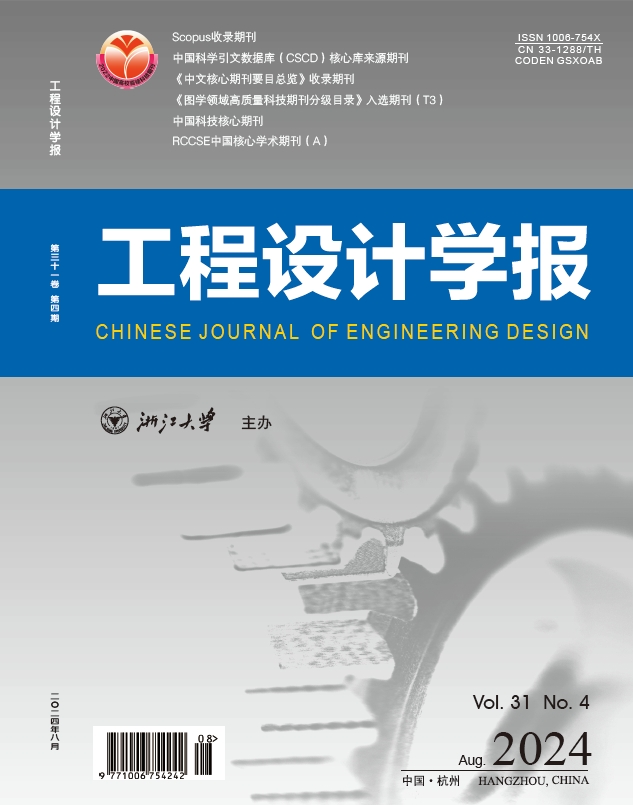Obstacle contained system (OCS) design method and its application in valve core orifice design of pilot-control globe valve
IF 4.5
Q4 Engineering
引用次数: 0
Abstract
With the development of the society and the times, traditional parametric design methods are witnessing a severe challenge due to the more and more complex physical systems. Thus, developing novel parametric analysis methods is very important for dealing with complex physical systems, refining useful parameters from numerous data, and proposing accurate prediction formulas. A spring slider system, a direct-current circuit system, a pipeline pressure drop system and a steady heat transfer model of flat plate system were described from the point of systemic parametric analysis method. Then, the key physical parameters in above four systems were summarized. Based on the comparative results, a novel systemic parametric design method, obstacle contained system (OCS) design method, was proposed. The OCS was made up of three elements:an obstacle element, a pass body element and a D-value element. With an abundant accurate data pole, the OCS design method could build the direct relationship of the obstacle element and the D-value element, which meant the simplification of the physical models and much easier to get relatively accurate results. Meanwhile, the design of pilot-control globe valve orifice was checked with both the OCS design method and the numerical simulation. The diameter of orifice on the valve core could influence the pressure difference and the maximum vapor rate inside pilot-control globe valves. Achieved by two different methods, the OCS design method and the numerical simulation, the results showed that the effects of orifice diameters on the pressure difference and the maximum vapor rate under different inlet velocities, were within 2% errors, which was reasonable and acceptable for the engineering application. In other words, the OCS design method was credible for parametric analysis. In future, the OCS design method has a broad application prospect to analyze various types of physical models especially in the era of big data.隔障系统设计方法及其在先导控制截止阀阀芯孔板设计中的应用
随着社会和时代的发展,物理系统越来越复杂,传统的参数化设计方法受到了严峻的挑战。因此,发展新的参数分析方法对于处理复杂的物理系统,从大量数据中提炼有用的参数,提出准确的预测公式是非常重要的。从系统参数分析的角度,描述了弹簧滑块系统、直流回路系统、管道压降系统和平板系统的稳态传热模型。然后,总结了上述四种体系的关键物理参数。在此基础上,提出了一种新的系统参数化设计方法——含障系统(OCS)设计方法。OCS由三个元素组成:障碍物元素、通道体元素和d值元素。OCS设计方法具有丰富的精确数据极点,可以建立障碍物元素与d值元素的直接关系,简化了物理模型,更容易得到相对准确的结果。同时,利用OCS设计方法和数值仿真对导控截止阀孔的设计进行了校核。阀芯孔直径对阀内压差和最大汽率有影响。通过OCS设计方法和数值模拟两种不同的方法实现,结果表明,在不同进口速度下,孔口直径对压差和最大蒸汽率的影响误差在2%以内,对于工程应用来说是合理和可以接受的。换句话说,OCS设计方法对于参数分析是可信的。未来,特别是在大数据时代,OCS设计方法在分析各类物理模型方面具有广阔的应用前景。
本文章由计算机程序翻译,如有差异,请以英文原文为准。
求助全文
约1分钟内获得全文
求助全文
来源期刊

工程设计学报
Engineering-Engineering (miscellaneous)
CiteScore
0.60
自引率
0.00%
发文量
2447
审稿时长
14 weeks
期刊介绍:
Chinese Journal of Engineering Design is a reputable journal published by Zhejiang University Press Co., Ltd. It was founded in December, 1994 as the first internationally cooperative journal in the area of engineering design research. Administrated by the Ministry of Education of China, it is sponsored by both Zhejiang University and Chinese Society of Mechanical Engineering. Zhejiang University Press Co., Ltd. is fully responsible for its bimonthly domestic and oversea publication. Its page is in A4 size. This journal is devoted to reporting most up-to-date achievements of engineering design researches and therefore, to promote the communications of academic researches and their applications to industry. Achievments of great creativity and practicablity are extraordinarily desirable. Aiming at supplying designers, developers and researchers of diversified technical artifacts with valuable references, its content covers all aspects of design theory and methodology, as well as its enabling environment, for instance, creative design, concurrent design, conceptual design, intelligent design, web-based design, reverse engineering design, industrial design, design optimization, tribology, design by biological analogy, virtual reality in design, structural analysis and design, design knowledge representation, design knowledge management, design decision-making systems, etc.
 求助内容:
求助内容: 应助结果提醒方式:
应助结果提醒方式:


